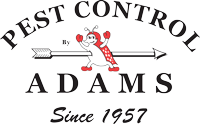
- Termite Protection Policies (Post and Pre-Construction Treatments – Renewed Annually)
- Moisture and Moisture-Related Organism Control (Vapor Barriers and Foundation Vents)
- Clearance Letters for Real Estate Transactions/Wood Destroying Organism Reports
Termites are common pests, if left uncontrolled, they cause structural damage to wooden structures. Termites infest more than 600,000 homes each and every year, causing more damage than fires, storms, or earthquakes, causing an estimated $2 billion in the United States alone.
Eastern Subterranean Termites are the most common and widely distributed termite in the United States. As the word “subterranean” implies, these termites live undergound.
How To Identify a Possible Infestation
Swarmers are generally the first sign of an infestation noticed by homeowners. The presence of swarming reproductive termites may be observed on windowsills or near indoor lighting. Swarmers inside the house usually indicate an active infestation in the structure. The presence of swarmers outdoors is a natural phenomenon, but should warn you that termites are near and possibly attacking a nearby building.
Infestations can also be detected by the presence of shelter tubes going up the sides of piers, utility entrances, or foundation walls.
Wood damage often is not found initially, but it definitely indicates termite infestation. Any wood-to-soil contact is a potential site of entry into a home. Wood that yields a dull, thudding sound when struck by a screwdriver or hammer should be examined. Careful probing of suspected areas with a sharp, pointed instrument such as an ice pick will disclose termite galleries or damage.
How To Control Eastern Subterranean Termites
The most effective way to control Eastern Subterranean Termites is to establish a treated barrier of soil between the wood in the building and the termite colony in the soil. This chemical barrier will kill any termites attempting to move through it. Treatments may involve trenching the soil adjacent to the exterior foundation wall down to the footers, and replacement of the soil after it is mixed with the termiticide; soil injection of a liquid termiticide, under pressure, through a hollow rod to saturate the soil adjacent to the foundation; and the drilling of concrete slabs, porches, and patios to reach the soil adjacent to the foundation beneath these structures.


